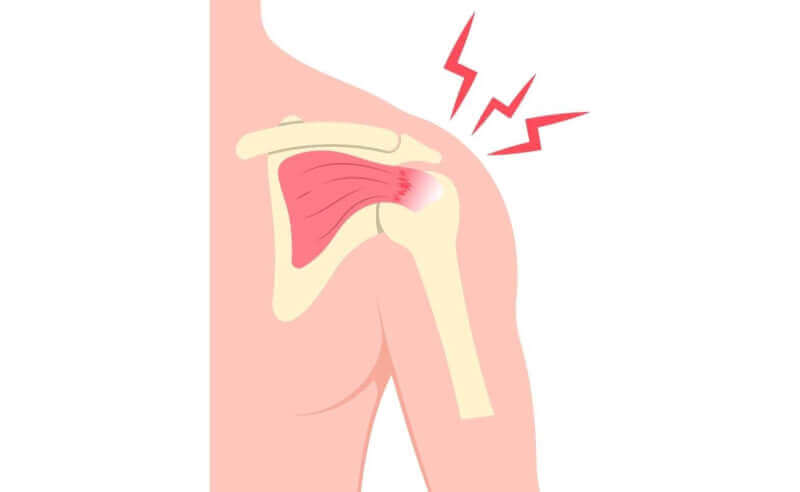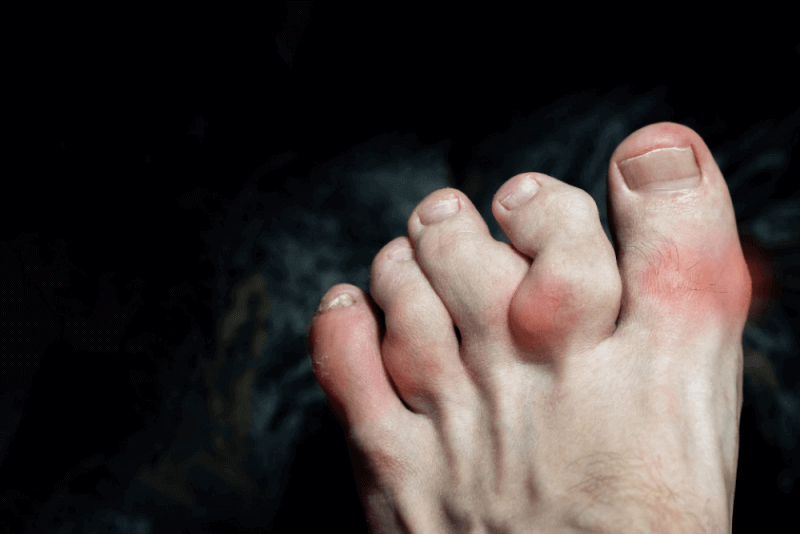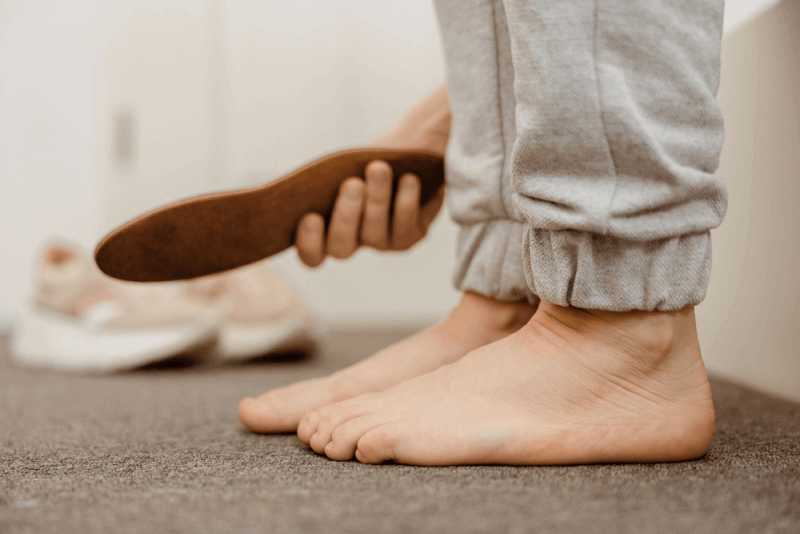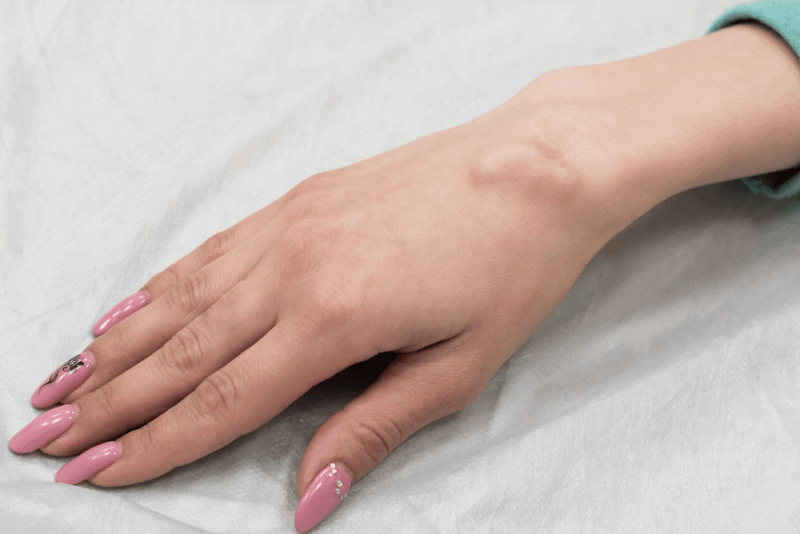30-Second Summary
- Shoulder tendon tear is a condition caused by damage to the tendons surrounding the shoulder joint.
- It usually occurs as a result of lifting weights, falling, or trauma to the shoulder joint.
- It can cause symptoms such as swelling, limited range of motion, and clicking sounds in the shoulder joint.
- It is often treatable with conservative methods (rest, ice application, pain relievers, and physical therapy). However, surgical treatment may be necessary in some cases.
What is a Shoulder Tendon Tear?
A shoulder tear is a health problem that can occur in people of all ages. The shoulder joint, frequently used in daily life, has a complex structure. Composed of 4 joints, 3 bones, and 26 muscles, the shoulder structure is prone to injuries. Early treatment of a shoulder tear is important for maintaining patients' quality of life.
A tear in the rotator cuff muscles surrounding the shoulder joints is called a shoulder tendon tear. These muscles give the shoulder much greater mobility than other joints. However, various factors can lead to a tear in this muscle tissue, hindering the joint's ability to move in a balanced way.
Types of Shoulder Tendon Tears
The types of shoulder tendon tears include the following:
- Partial tears, where the tendon is still partially attached to the arm bone.
- Complete tendon tears, where the tendon is entirely separated from the arm bone.
How Does a Shoulder Tendon Tear Occur?
A shoulder tear refers to the wearing or fraying of tendons surrounding the shoulder bones. Shoulder tendon tears, often resulting from sudden and strenuous movements, are more common in older individuals as tendons tend to wear out over time, making them more susceptible to injury.
Who is Prone to Shoulder Tendon Tears?
Shoulder tendon tears are often seen in individuals who perform heavy and repetitive movements. Therefore, it is frequently observed among basketball players, carpenters, painters, volleyball players, bodybuilders, and construction workers. However, a shoulder tendon tear can occur in people of any age and background.
Symptoms of Shoulder Tendon Tear
The symptoms of shoulder tendon tears negatively impact patients' daily lives, necessitating prompt treatment. The symptoms of shoulder tendon tears include the following:
- Chronic pain
- Aching
- Burning sensation
- Pain at rest
- Weakness in muscles
- Difficulty performing daily activities
- Desire to keep the shoulder immobile
- Limited range of motion
- Grinding sound in the shoulder joint
- Inability to raise the arm sideways or upwards
- Deformities
- Weakness in the arm
These symptoms tend to intensify if left untreated.
Causes of Shoulder Tendon Tears
The causes of shoulder tendon tears include:
- Formation of a bony protrusion under the acromion bone due to advanced age
- Insufficient blood flow
- Repetitive movements
- Reaching
- Throwing
- Lifting heavy objects
- Traumatic events in the shoulder and arms
- Falling
- Impact
- Being of advanced age
Risk Factors for Shoulder Tendon Tears
Shoulder tendon tears can occur in anyone, but the risk increases if the following factors are present.
- Family history of shoulder problems or rotator cuff injuries
- Poor posture
- Smoking
- Being over the age of 40
Degenerative tears are more commonly seen in people who perform repetitive shoulder movements such as:
- Carpenters
- Mechanical workers
- Painters
- Those involved in sports like baseball, tennis, or rowing
How is a Shoulder Tendon Tear Diagnosed?
The most common complaint among individuals who consult a doctor due to suspected shoulder tendon tear is shoulder pain. Patients visiting a doctor undergo a detailed physical examination. Additionally, the neck area should also be examined during the assessment, as shoulder tendon tears can sometimes cause issues in this region as well.
After the physical examination, imaging methods such as MRI and X-ray are also utilized. During this process, the presence of rheumatic diseases or any past traumas in patients should also be assessed. The final method for diagnosing shoulder tendon tears is an arthroscopic evaluation.
Treatment Methods for Shoulder Tendon Tears
In the treatment of shoulder tendon tears, the patient's general health condition and the degree of the tear should be considered. Conservative treatment is usually sufficient for minimal tears, while surgical options may need to be evaluated for larger tears.
Various treatment methods are applied for shoulder tendon tears. For tears caused by overuse of the shoulder joint, rest is often recommended. Additionally, medications are prescribed to reduce swelling and manage pain.
Keeping the shoulder immobile can weaken the joint. Therefore, various exercises are recommended for patients. Performing these exercises under the supervision of specialized physiotherapists helps prevent further damage to the shoulder joint.
Corticosteroid injections may also be included in the treatment to help control severe pain caused by shoulder tendon tears. Ultrasound is another component of the treatment. The heat feature of the device can accelerate the healing process.
Arthroscopy is a method used for both diagnosing and treating shoulder tears. For this, an incision of about 1 centimeter is made in the shoulder area. Then, imaging devices and special equipment are used to assess and treat the condition of the tendons.
Additionally, mini-open repair can also be used to treat shoulder tendon tears. Small incisions are made in the joints, and based on the planned procedure, tissue transfer or grafting is performed.
Shoulder Tendon Tear Surgery
One of the frequently applied treatment methods for shoulder tendon tears is surgical intervention. In planning the surgery, the cause of the tear and the severity of the symptoms it causes are crucial. Surgery is often considered when patients experience severe pain or significant movement limitation that affects their daily lives, or when other treatment methods have not been successful.
The conditions necessary for shoulder tendon tear surgery include:
- Symptoms persisting for longer than six months
- The tear being larger than 1 centimeter, as seen in imaging studies
- The patient experiencing severe muscle weakness
- The patient experiencing unbearable pain
Shoulder tendon tear surgeries are performed under general anesthesia. During the procedure, patients are positioned lying down or seated. In surgeries performed with both open and closed methods, if the closed method is used, a small incision is made, and the tear is repaired with the help of a specialized camera and equipment.
After shoulder tendon tear surgeries, which usually last 1-2 hours, it is crucial for patients to follow their doctor's recommendations carefully. Patients need to be especially attentive regarding the arm sling duration and exercises.
Like other surgeries, shoulder tendon tear surgeries carry certain risks. In addition to the risks associated with general anesthesia, such as those posed by anesthesia itself, there are also risks of bleeding and infection, especially in open surgeries.
Methods of Shoulder Tendon Tear Surgery
Several factors, primarily the type of repair needed, influence the selection of the method used in shoulder tendon tear surgery. The surgical methods used for treatment include the following:
Open Repair
For large or complex tears, a traditional open surgical incision is preferred. The incision is usually a few centimeters long and is typically made over the shoulder, as this location provides better visibility and access to the tear.
During open repair, surgeons often remove bony protrusions located under the acromion. This procedure is known as acromioplasty. Situations where open repair is recommended include:
- The need for tendon transfer
- Large tears
- The need for additional reconstruction
- Complex tears
Open repair was the initial technique used for rotator cuff tears. However, advancements in surgery over the years have allowed for less invasive procedures with similar outcomes.
All-Arthroscopic Repair
In arthroscopy, a small camera called an arthroscope is placed in the surgical area. This camera provides a live video feed on a monitor, allowing the surgeon to perform the procedure with these visuals and miniature surgical instruments.
The small size of the instruments allows for smaller incisions, making it a minimally invasive approach. Typically performed on an outpatient basis, this method offers significant advantages for the patient compared to other techniques.
Mini-Open Repair
This method involves making a smaller open incision than in traditional open repair. It often requires the use of arthroscopic devices to assess and treat other structures within the joint.
After the arthroscopic part of the procedure, traditional methods are applied through the small incision to repair the rotator cuff. During tendon repair, the surgeon can view the tissues directly instead of relying on a video monitor.
Benefits of Shoulder Tendon Tear Surgery
Most patients experience increased shoulder strength and reduced pain following shoulder tendon tear surgery.
Each surgical repair technique offers similar outcomes in terms of pain relief, strength, functional improvement, and patient satisfaction. The most important factor in achieving satisfactory results is the surgeon's experience. Factors that may reduce satisfaction include:
- Poor tissue quality
- Large and extensive tears
- Poor patient compliance and participation in post-operative restrictions and rehabilitation
- Being over 65 years of age
- Use of nicotine products
- Workers' compensation claims
Complications of Shoulder Tendon Tear Surgery
A small percentage of patients experience certain complications following rotator cuff tear surgeries. In addition to general surgical risks like blood loss and anesthesia-related issues, complications specific to rotator cuff surgery include:
- Nerve damage, particularly to the deltoid nerve, which controls shoulder muscle movement
- During open repair, a shoulder muscle may be partially detached to allow better access to the rotator cuff and is sewn back afterward. It is crucial to protect this area to ensure proper healing; failure to do so may result in deltoid detachment.
- Early rehabilitation helps reduce the likelihood of permanent stiffness. Many cases of stiffness improve with more aggressive therapy and exercise.
- Re-tearing of the tendon
- Infection
Surgery Summary
Duration: 1-2 hours
Anesthesia Type: General anesthesia
Hospital Stay: 1 day
Return to Work: 14 days
PRP Treatment for Shoulder Tendon Tear
PRP treatment, considered highly effective in treating musculoskeletal disorders, is one of the methods used for shoulder tendon tear treatment. Blood drawn from patients (8-10 cc) is processed in a PRP tube via centrifugation for 15 minutes, concentrating growth factors and cytokines at the top of the tube. These platelets are then injected into the damaged shoulder tissues.
The PRP method aims to repair and treat damaged tissue rather than just relieve pain. The healing effect of the injection starts within 15 minutes. Patients usually experience initial signs of improvement within the first week, and full recovery occurs in approximately one month. The time to achieve results after the PRP procedure varies based on the size of the tear, the patient's attention to shoulder health, and age.
How Many PRP Sessions are Needed?
For shoulder tendon tear treatments, it is recommended to apply PRP treatment in at least three sessions. The interval between sessions should be at least 5 and no more than 21 days. This period is important because cells regenerate in 21-day cycles, maximizing the benefits of PRP treatment.
Exercise in Shoulder Tendon Tear Treatment
Exercise plays a significant role in shoulder tendon tear recovery. However, these exercises should be performed under expert supervision. Establishing a qualified exercise program and following it regularly strengthens the shoulder joint and accelerates the healing process.
Precautions During Exercise
When performing exercises to treat shoulder tears or maintain shoulder joint health, it is important to follow these precautions:
- Exercises should be done under medical supervision.
- Avoid lifting weights during exercise.
- Do not overstrain the shoulder joint.
- Always perform warm-up exercises before starting.
- Avoid overhead arm movements.
- Prefer swimming and similar exercises.
Complications of Shoulder Tendon Tear
If untreated, a shoulder tendon tear can worsen, increasing the risk of a complete tear. A complete tear can severely restrict arm movement. Additionally, untreated cases may lead to chronic pain and make it difficult for patients to use the affected arm.
Recovery Process for Shoulder Tendon Tear
After surgical repair of a shoulder tendon tear, patients are expected to experience some pain, and necessary measures are taken to manage it. Opioids, non-steroidal anti-inflammatory drugs, and local anesthetics are commonly prescribed. Doctors often use other medication combinations to minimize opioid use due to their addictive potential.
Rehabilitation
Rehabilitation is another essential step in the shoulder tendon recovery process, playing a vital role in helping patients return to their daily activities.
Post-operative physical therapy is performed in stages. The initial stage aims to prevent movement of the arm to protect the repair during tendon healing. This phase, lasting 4 to 6 weeks, requires the arm to be in a sling, with no arm use allowed.
Even after surgical repair, the surrounding muscles of the joint may weaken. Therefore, once the surgeon deems it safe to move the arm, passive exercises should begin to improve shoulder range of motion. Passive exercises involve supporting the arm and moving it through various positions, typically starting 4 to 6 weeks after surgery.
Active exercises commence after passive exercise and healing phases are complete. At this stage, the arm is used without assistance, gradually increasing strength and improving control. A strengthening program begins 8-12 weeks post-surgery.
Complete recovery from a shoulder tendon tear generally takes 4 to 6 months. After this period, most patients regain adequate range of motion and strength in their arms. Continuing the rehabilitation process regularly is crucial for successful recovery.











C** S** | 21 Feb 2025